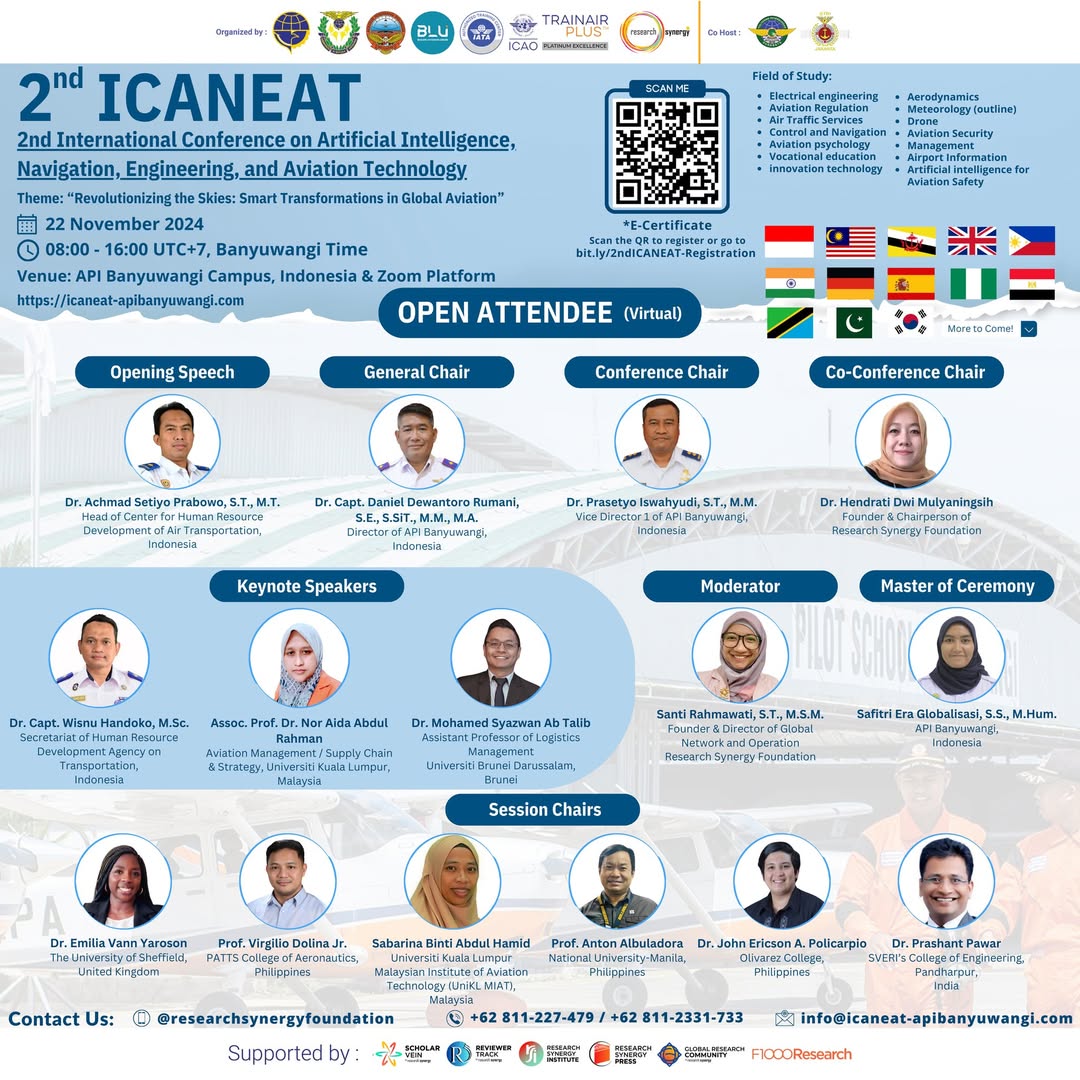Integrating the NodeMCU ESP8266 Microcontroller with the DHT11 and MQ-135 Sensors Enables IoT-Based Air Quality Monitoring
Keywords:
Temperature Monitoring, Room Air Humidity, NodeMCU ESP8266, Real-Time Monitoring.Abstract
The purpose of this study is to create an Internet of Things (IoT)-based air quality monitoring system that can be used in rooms to improve comfort and check air quality. The NodeMCU microcontroller ESP8266 equipped with a DHT11 sensor for temperature and humidity as well as an MQ-135 air quality sensor. The Blynk app and OLED LCD display display display environmental data in real-time, which makes it easy to monitor without having to be on site. The design is carried out through research and development (R&D) methods. This process includes the stages of identifying needs, designing, implementing, and testing the system in the field. The results of HasiI testing showed that the system was able to provide accurate and stable data even though the temperature and humidity deviations were still within tolerance limits. It is hoped that this system can help maintain air circulation in the room and increase awareness of the importance of air quality in the surrounding environment.
References
[1] Z. Syahputra, M. Iqbal, and M. I. Syarif, "The Application of the Fuzzy Sugeno Method to Smart Farming Based on Temperature and Water Content Measurement," Semin. Nas. Sos. Science and Technology. Halal, pp. 15–18, 2022. Available: https://journal.pancabudi.ac.id/index.php/halal/article/view/4223%0Ahttps://journal.pancabudi.ac.id/index.php/halal/article/download/4223/3834.
[2] M. Adam and M. Zurairah, "Design of Classroom Room Temperature Control at the University of Muhammadiyah North Sumatra," Semin. Nas. Tech. UISU, vol. 4, no. 1, pp. 80–89, 2021.
[3] F. Wadly, "Design Smart Door Locks With Internet Of Things Based On Pin Security Features," Int. J. Comput. Sci. Math. Eng., vol. 2, no. 2, 2023.
[4] U. C. Mariance, Irwan, M. Arief, and S. Nasution, "Planning of Library Information Systems with the Internet of Things (IoT) Using Mcu Nodele-Based Radio Frequency Identification Devices at SMKN," Bull. Comput. Sci. Res., vol. 3, no. 4, pp. 304–309, 2023, doi: 10.47065/bulletincsr.v3i4.245.
[5] R. Aulia, "Room Temperature Control Using," J. Tek. Inform. Univ. Harapan Medan, vol. 6, no. 2502–7131, pp. 1–9, 2021.
[6] A. Badawi and R. R. Harahap, "Voltage and Temperature Monitoring of Internet of Things-Based Distribution Substations," J. Sci. Soc. Res., vol. 4307, no. 3, pp. 778–783, 2023. Available: http://jurnal.goretanpena.com/index.php/JSSR778.
[7] M. Wijayanti, "Prototype of Smart Home with IoT-Based Nodemcu Esp8266," J. Ilm. Tech., vol. 1, no. 2, pp. 101–107, 2022, doi: 10.56127/juit.v1i2.169.
[8] A. Mulyana, S. Rahmawati, R. Rahman, and Z. Nur Permatasari, "IoT-Based Electronic Device Controller Using Blynk and Google Assistant," J. Comput. Sci. Technol., vol. 2, no. 1, pp. 30–35, 2022, doi: 10.54840/jcstech.v2i1.24.
[9] D. Kurniawan, S. R. Sulistiyanti, and U. Murdika, "Carbon Monoxide (CO) and Carbon Dioxide (CO2) Gas Monitoring System Using Telegram-Integrated MQ7 and MQ-135 Sensors," J. Inform. and Tek. Electro Therapy, vol. 11, no. 2, pp. 200–206, 2023, doi: 10.23960/jitet.v11i2.2963.
[10] I. El, A. Pakpahan, and U. Hasibuan, "Performance Analysis of DHT11 Sensor in Temperature Detection Devices Using Fuzzy Logic Method," vol. 03, no. 01, pp. 35–40, 2024.
[11] K. Zuhri, F. Fahurian, and F. A. Putra, "Design and Construction of Arduino Uno-Based Parking Space Monitoring System," J. Teknol. and Inform., vol. 4, no. 1, pp. 1–12, 2023, doi: 10.57084/jeda.v4i1.1179.
[12] Rahmadhani and W. Arum, "Literature Review Internet of Thought (IoT): Sensors, Connectivity and QR Codes," J. Manaj. Educators. Dan Ilmu Sos., vol. 3, no. 2, pp. 573–582, 2022, doi: 10.38035/jmpis.v3i2.1120.
[13] H. Herdianto, "Lake Siombak Water Quality Monitoring System Using Arduino Uno," CESS (Journal Comput. Eng. Syst. Sci.), vol. 5, no. 2, p. 171, 2020, doi: 10.24114/cess.v5i2.18202.
[14] S. A. Kartini, P. C. Sabila, P. P. Budi, U. Tjut, and N. Dhien, "Instal: Jurnal Komputer," vol. 16, pp. 289–298, 202
Downloads
Published
Issue
Section
License
Copyright (c) 2025 Fachrid Wadly, Zuhri Ramadhan, Muslim, Kelvyn Rosan (Author)

This work is licensed under a Creative Commons Attribution-ShareAlike 4.0 International License.









